Cotter Sayre0071544526, 9780071544528, 9780071642729, 0071642722
This fully updated and revised edition of the bestselling Complete Wireless Design takes a uniquely practical approach to designing complex receivers and transmitters found in advanced analog and digital wireless communication systems, right down to the circuit level.
This authoritative book uses real-life examples to provide a solid foundation in the subject, and simple algebra to guide you through specific analysis and design processes. In addition, you’ll find all the information you’ll need for performing full circuit and electromagnetic software simulations to ensure the optimum performance of all completed projects. Plus, this in-depth step-by-step guide comes with a CD-ROM containing new simulation and design software. Engineers and technicians will not find a more thorough, practical book than Complete Wireless Design.
Updates include: Fully worked out design samples, complete with RF simulation results Special sections on power amplifier design and printed circuit board layout Brand-new chapters covering antenna design and RF test and measurement Tips and techniques on performing accurate RF circuit simulations How to design for EMI control to pass FCC product testing The latest software for use in wireless design
This COMPLETELY updated edition teaches you how to design: Amplifiers Oscillators Frequency synthesizers Filters Mixers Antennas Support circuits Communication systems
Table of contents :
Contents……Page 11
Preface……Page 19
Acknowledgments……Page 21
1.1.2 Resistors……Page 25
1.1.3 Capacitors……Page 27
1.1.4 Inductors……Page 32
1.1.5 Ferrite Beads……Page 35
1.1.6 Transformers……Page 36
1.2.1 Introduction……Page 38
1.2.2 Diodes……Page 39
1.2.3 Transistors……Page 47
1.3.1 Introduction……Page 54
1.3.2 Microstrip as Transmission Line……Page 56
1.3.3 Microstrip as Equivalent Components……Page 57
1.4.2 Transmission Line Types……Page 71
1.4.3 Transmission Line VSWR……Page 73
1.5.1 Introduction……Page 75
1.5.2 S-Parameter Measurement……Page 77
1.6.1 Introduction……Page 80
2.1.2 AM Fundamentals……Page 83
2.2.2 FM Fundamentals……Page 88
2.3.2 SSB Fundamentals……Page 93
2.3.3 SSB Modulation……Page 94
2.4.2 PM Fundamentals……Page 96
2.5.1 Introduction……Page 98
2.5.2 Digital Modulation Types……Page 99
2.5.3 Digital Modulation Power……Page 103
2.5.4 Digital Modulation Issues……Page 106
2.6.1 Introduction……Page 113
2.6.2 Designing with the RFMD RF2713……Page 117
3.1.2 Common-Base Amplifier……Page 119
3.1.3 Common-Emitter Amplifier……Page 121
3.1.4 Common-Collector Amplifier……Page 122
3.2.1 Introduction……Page 123
3.2.2 Amplifier Matching Network Types……Page 126
3.2.3 Amplifier Matching Network Issues……Page 128
3.3.2 Distortion……Page 131
3.4.2 Small-Signal Amplifier Design with S-Parameters……Page 137
3.4.3 Small-Signal Design and Vector Algebra……Page 146
3.4.4 Small-Signal Amplifier Stability……Page 147
3.4.5 Small-Signal Design Approximations……Page 153
3.4.6 Small-Signal Matching Network Design……Page 154
3.4.7 Small-Signal Amplifier Class A Design Procedure……Page 181
3.5.1 Introduction……Page 186
3.5.2 Power Amplifier, Class C……Page 189
3.5.3 Power Amplifier Design with Equivalent Impedances……Page 191
3.5.4 Power Amplifier Design Issues……Page 192
3.5.5 Power Amplifier Load Pull……Page 195
3.5.6 Power Amplifier Design Steps……Page 197
3.5.7 Power Amplifier Stability, Tests, and Cures……Page 200
3.5.8 Power Amplifier Gain Flattening……Page 201
3.6.2 Amplifier Bias Classes of Operation……Page 204
3.6.3 Amplifier Bias Circuits……Page 206
3.6.4 Amplifier Bias Circuit Issues……Page 213
3.6.5 Amplifier Bias Design……Page 217
3.7.1 Introduction……Page 230
3.7.2 MMIC Amplifier Biasing……Page 231
3.7.3 MMIC Biasing Procedure……Page 232
3.7.4 MMIC Coupling and Decoupling……Page 233
3.7.5 MMIC Amplifier Circuit……Page 234
3.8.2 Wideband Amplifier Stability……Page 235
3.8.3 Wideband Amplifier Design……Page 238
3.9.1 Introduction……Page 240
3.9.2 Parallel Amplifier Design with MMICs……Page 241
3.10.2 Audio Amplifier Design……Page 244
3.11.2 VGA Amplifier Design……Page 245
3.12.2 Coupling and Decoupling Circuit Design……Page 248
4.1.2 Oscillator Operation……Page 255
4.1.3 Oscillator Design Issues……Page 257
4.2.1 Introduction……Page 258
4.2.2 Oscillator Open-Loop Design and Simulation……Page 259
4.3.1 Introduction……Page 265
4.3.2 Low Phase-Noise Oscillator Guidelines……Page 266
4.4.1 Introduction……Page 267
4.4.2 LC and VCO Oscillator Topologies……Page 268
4.4.3 LC and VCO Oscillator Design……Page 271
4.4.5 LC and VCO Output Coupling……Page 287
4.4.6 LC and VCO Oscillator Harmonics……Page 289
4.4.7 LC and VCO Oscillator Output Power……Page 290
4.4.8 LC and VCO Oscillator Terms……Page 291
4.5.1 Introduction……Page 292
4.5.2 Crystal Oscillators Types……Page 294
4.5.3 Crystal Oscillator Design……Page 296
4.5.4 Crystal Oscillator Issues……Page 300
4.5.5 Crystal SAW-Based Oscillators……Page 301
4.5.6 Crystal Oscillator Testing and Optimizing……Page 302
5.1.2 PLL Operation……Page 303
5.1.3 PLL Phase Noise……Page 310
5.1.5 PLL Lock Time……Page 312
5.1.6 PLL Design Procedure……Page 313
5.1.7 PLL Problems and Solutions……Page 324
5.1.8 PLL Fractional-N Synthesizers……Page 328
5.2.1 Introduction……Page 329
6.1.1 Introduction……Page 333
6.1.2 Filter Structures……Page 337
6.1.3 Filter Bandpass Responses……Page 341
6.2.2 Lumped Filter Circuit Types……Page 342
6.2.3 Lumped Filter Image-Parameter Design……Page 348
6.2.4 Lumped Filter Design Issues……Page 358
6.3.2 Distributed Filter Circuit Types……Page 359
6.3.3 Distributed Filter Design Methods……Page 361
6.3.4 Distributed Filter Issues……Page 373
6.4.2 Diplexer Filter Design……Page 376
6.5.2 Crystal Filters……Page 380
6.5.3 SAW Filters……Page 382
6.5.4 SAW Filter Issues……Page 383
6.6.1 Introduction……Page 384
6.6.2 Active Filter Design……Page 386
6.7.1 Introduction……Page 392
6.7.2 Tunable Filter Design……Page 393
6.8.2 Filter Issues……Page 398
6.8.3 Filter Terminology……Page 400
7 Mixer Design……Page 403
7.1.1 Introduction……Page 404
7.1.2 Passive Mixers Types……Page 405
7.1.3 Passive Mixer Design……Page 407
7.1.4 Passive Mixer Distortion……Page 412
7.1.5 Passive Mixer Issues……Page 414
7.2.1 Introduction……Page 416
7.2.2 Active Mixers Types……Page 417
7.2.3 Active Mixer Design……Page 419
7.3.2 Image-Reject Mixers……Page 424
7.3.3 Harmonic-Mode Mixers……Page 425
8.1.1 Introduction……Page 427
8.1.3 Frequency Multiplier Design……Page 430
8.1.4 Frequency Multiplier Issues……Page 439
8.2.1 Introduction……Page 440
8.2.2 RF Switch Design……Page 444
8.3.1 Introduction……Page 453
8.3.2 Automatic Gain Control Design……Page 455
8.4.1 Introduction……Page 462
8.4.2 Attenuator Design……Page 463
8.5.1 Introduction……Page 466
8.5.2 Balun Design……Page 467
8.6.1 Introduction……Page 472
8.6.2 Splitter and Combiner Design……Page 473
8.7.1 Introduction……Page 476
8.7.2 Power Supply Regulators……Page 480
8.7.4 Power Supply Regulator Design……Page 484
8.8.1 Introduction……Page 492
8.8.2 Directional Coupler Design……Page 493
8.9.1 Introduction……Page 495
8.9.2 Speech Processing……Page 496
8.9.3 Automatic Frequency Control……Page 498
8.9.4 Squelch……Page 499
9.1.2 Receiver Image……Page 503
9.1.3 Receiver Noise Figure……Page 506
9.1.6 Receiver Reciprocal Mixing……Page 508
9.1.7 Receiver Half-IF Spurs……Page 509
9.1.8 Receiver Phase Noise……Page 510
9.1.9 Receiver Systems Design……Page 511
9.2.2 Transmitter Systems Design……Page 518
9.3.2 TDD Transceiver……Page 522
9.3.3 FDD Transceiver……Page 524
9.3.4 RFIC Transceiver……Page 526
9.3.5 System Design Issues……Page 528
9.4.1 Introduction……Page 530
9.4.2 Multipath……Page 531
9.4.3 RF Link Budgets……Page 532
9.4.4 RF Link Issues……Page 540
10 Communication Antennas……Page 543
10.1.2 Internal Antennas……Page 550
10.1.3 External Antennas……Page 555
10.1.4 Antenna Design……Page 557
11.1.1 Introduction……Page 563
11.1.2 RF Simulator Overview……Page 566
11.1.3 RF Simulator Software Programs……Page 568
11.1.4 RF Simulator Accuracy and Guidelines……Page 570
11.1.5 RF Simulator Issues……Page 577
12 Wireless Testing……Page 583
12.1.2 Wireless Receiver Tests……Page 584
12.2.1 Introduction……Page 585
12.2.2 Digital Signal Power Test……Page 586
12.2.3 Constellation and Eye Diagram Test……Page 588
12.2.4 Bit Error Rate Test……Page 590
12.2.5 Phase Noise Test……Page 591
12.2.6 Noise Figure Test……Page 593
12.2.8 Blocking/Desensing Test……Page 594
12.2.11 SINAD Sensitivity Test……Page 596
12.2.13 P1dB Compression Test……Page 597
12.2.15 Spurious Free Dynamic Range Test……Page 598
12.2.16 Image Rejection Test……Page 599
12.2.19 NxM Spur Test……Page 600
12.2.21 VCO Pushing Test……Page 601
12.2.22 Radiated Output Power Test……Page 602
12.2.23 General Precompliance Test……Page 603
13.1.1 Introduction……Page 607
13.1.2 Electromagnetic Interference Suppression……Page 608
13.2.2 Printed Circuit Board Materials……Page 613
13.2.3 Printed Circuit Board Construction……Page 616
13.2.4 Printed Circuit Board Design Considerations……Page 619
13.2.5 Printed Circuit Board Design for Miscellaneous Circuits……Page 630
13.2.6 Printed Circuit Board Fabrication Files……Page 636
13.3.1 Introduction……Page 638
13.3.2 RF Shielding Resonances……Page 639
13.4.1 Introduction……Page 640
13.5.1 Introduction……Page 642
13.5.2 Prototyping Considerations……Page 643
14.1.2 Software Radio Designs……Page 645
14.2.2 Direct Conversion Issues……Page 647
14.3.1 Introduction……Page 648
14.3.2 Hybrid Circuit Assembly……Page 649
14.4.1 Introduction……Page 650
14.4.2 RF Connector Types……Page 651
14.5.2 FCC Equipment Law……Page 652
Appendix: Order of Operations……Page 655
A……Page 659
B……Page 660
C……Page 661
D……Page 663
E……Page 664
F……Page 665
H……Page 667
I……Page 668
M……Page 669
N……Page 670
P……Page 671
R……Page 672
S……Page 674
T……Page 677
V……Page 678
Z……Page 679
Bibliography……Page 681
Index……Page 697
A……Page 699
B……Page 700
C……Page 701
D……Page 702
F……Page 704
G……Page 705
I……Page 706
L……Page 707
M……Page 708
O……Page 709
P……Page 710
R……Page 711
S……Page 713
T……Page 715
W……Page 716
Z……Page 717


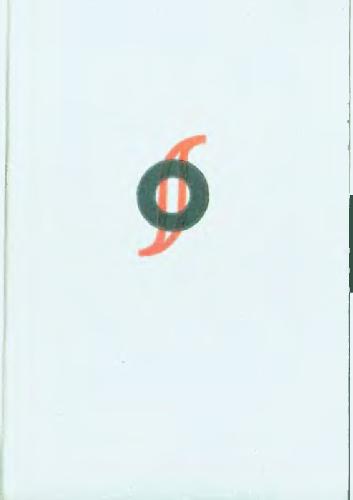
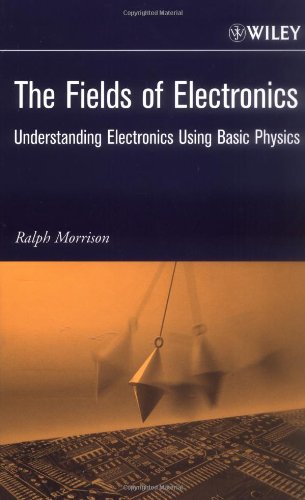
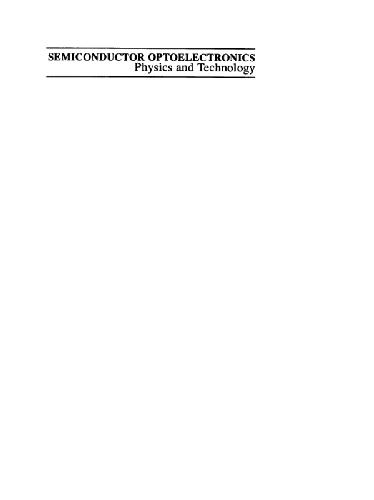
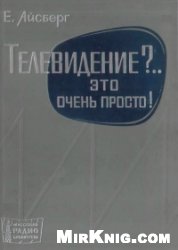
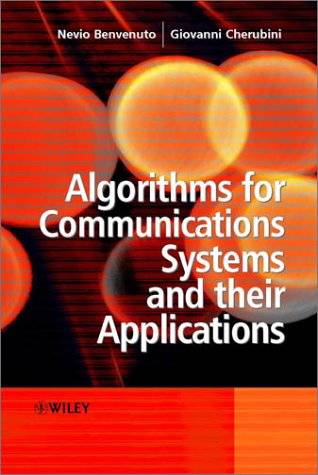
Reviews
There are no reviews yet.